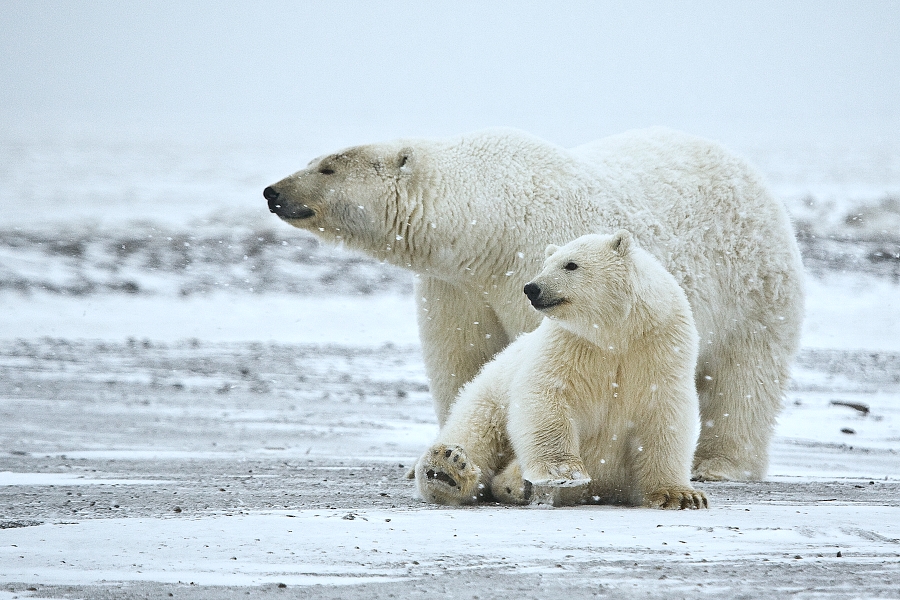 Polar bears have been around for thousands of years and one of the main reasons for the sharp decline in their population has been due to hunters. But now there is a new problem brewing for these Arctic mammals and its name is global warming. The warming or melting of the sea ice affects a polar bears habitat and reduces its ability for sufficient food. Scientists believe that we have until 2015 before we reach a tipping point with global climate change. If we do not change, it may be the end of polar bears and with the rapid rate of melting this could also put our lives in danger. With an increase in sea level, we could soon find ourselves with floods and tsunamis. Enough about humans, let’s talk more about the polar bears. Most polar bears, 60% to be exact, live in Canada. Now although the polar bear habitat seems to melting away as we speak, some native communities in Canada are seeing an increase in the amount of polar bears on land. This is quite obvious being that their original habitat is starting to disappear.
Polar bears have been around for thousands of years and one of the main reasons for the sharp decline in their population has been due to hunters. But now there is a new problem brewing for these Arctic mammals and its name is global warming. The warming or melting of the sea ice affects a polar bears habitat and reduces its ability for sufficient food. Scientists believe that we have until 2015 before we reach a tipping point with global climate change. If we do not change, it may be the end of polar bears and with the rapid rate of melting this could also put our lives in danger. With an increase in sea level, we could soon find ourselves with floods and tsunamis. Enough about humans, let’s talk more about the polar bears. Most polar bears, 60% to be exact, live in Canada. Now although the polar bear habitat seems to melting away as we speak, some native communities in Canada are seeing an increase in the amount of polar bears on land. This is quite obvious being that their original habitat is starting to disappear. |
| Polar bears on land but if global warming is not stopped then there will be no land |
| Mother polar bear and her young cubs |
References:
http://www.polarbearsinternational.org/polar-bears
http://www.worldwildlife.org/species/finder/polarbear/polarbear.html
http://animals.nationalgeographic.com/animals/mammals/polar-bear/
Photos:
Google Images (polar bears)
I commented on:
http://armenianbiopro.blogspot.com/
http://natashasbioblog.blogspot.com/2010/10/worlds-fastest-cats-are-disappearing.html?showComment=1286378408875_AIe9_BEe9TEUonhEPuuFiEMxbf_FeaZXK
I think that it's cool that their is a group out there focusing all of their efforts on keeping the polar bear species alive. This crisis is seen quite a lot on the news, but I never hear of solutions to the problem, other than simply "humans must cut greenhouse gases". It's understandable that this is the main problem, but it is quite a big problem. It's good that their are people that are trying to figure out other ways to keep the polar bear species alive, such as cutting human-bear relations.
ReplyDelete